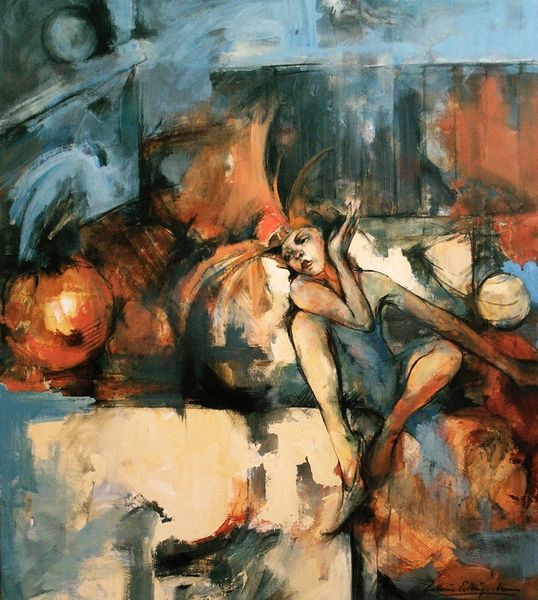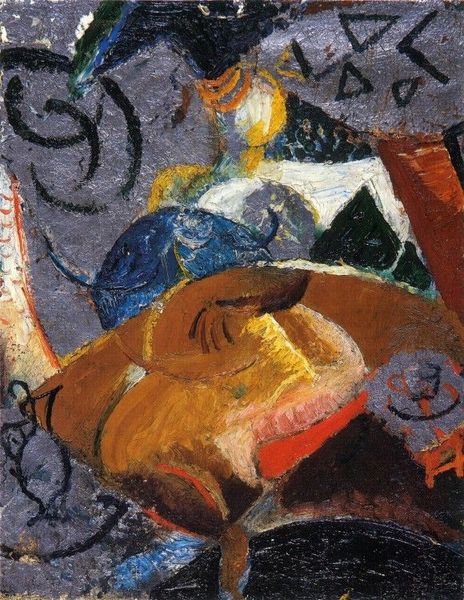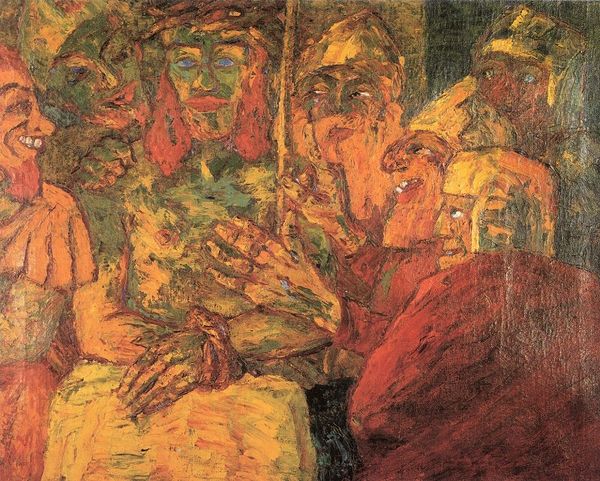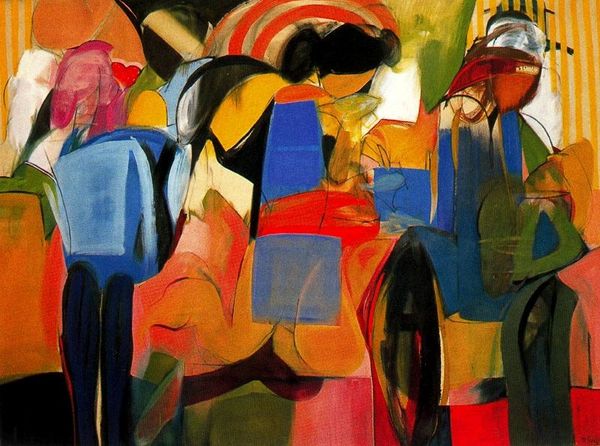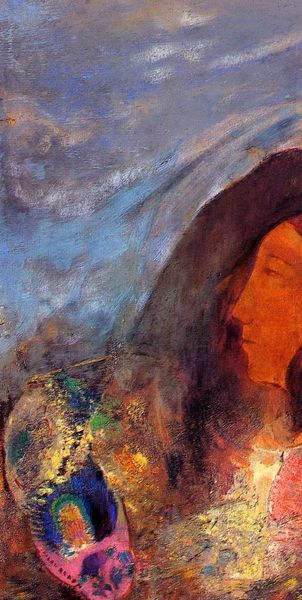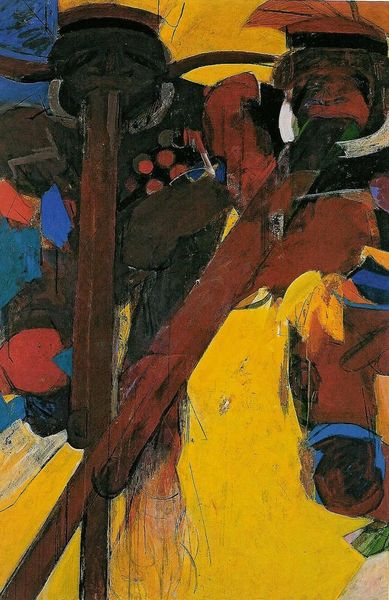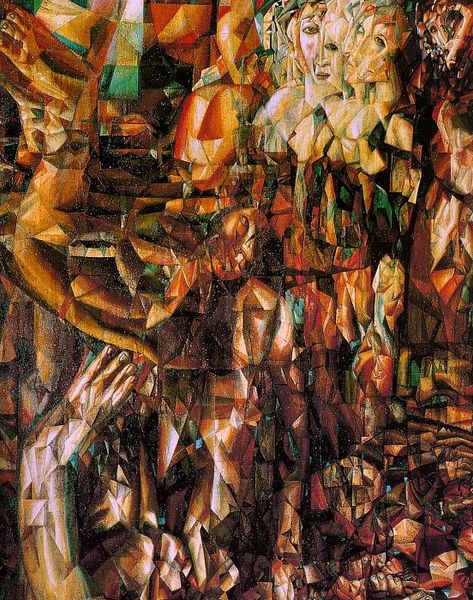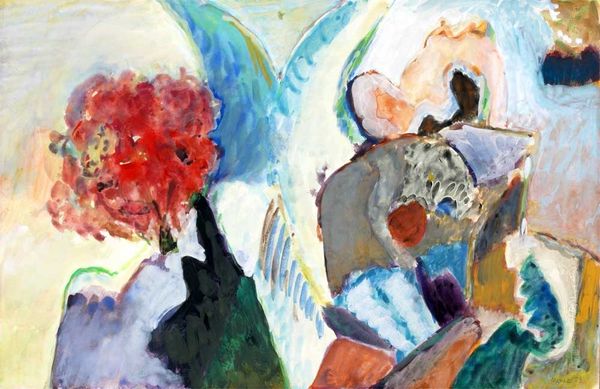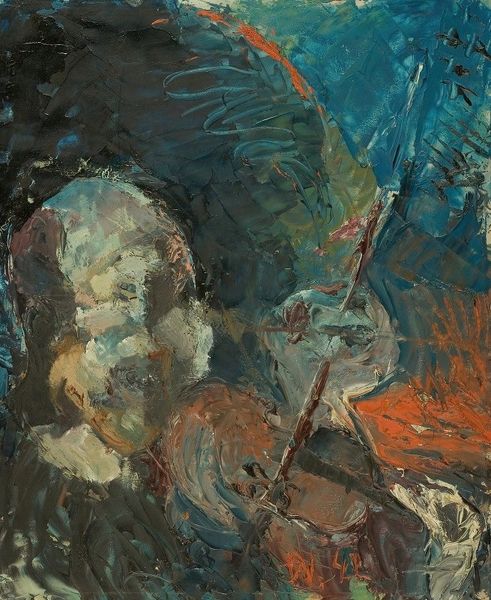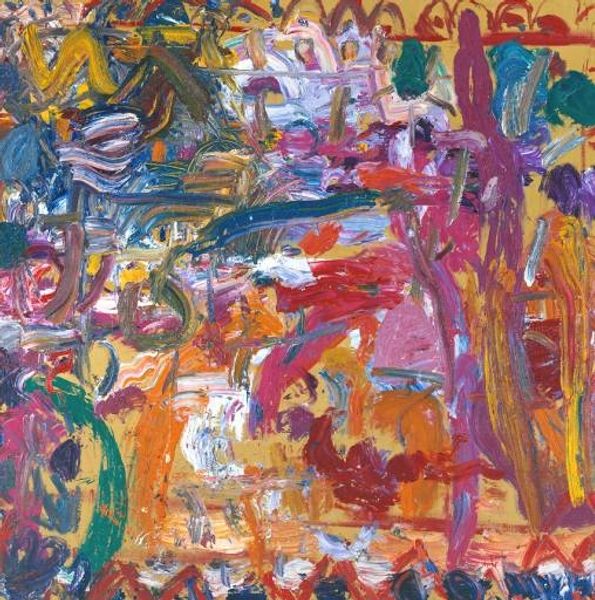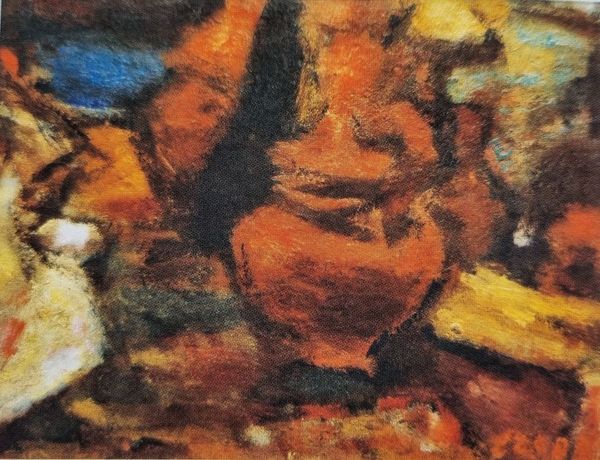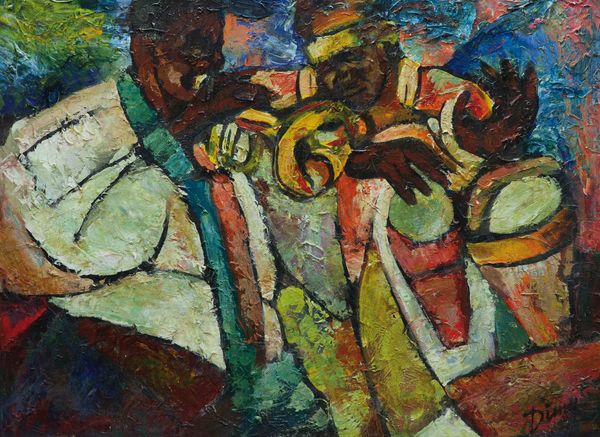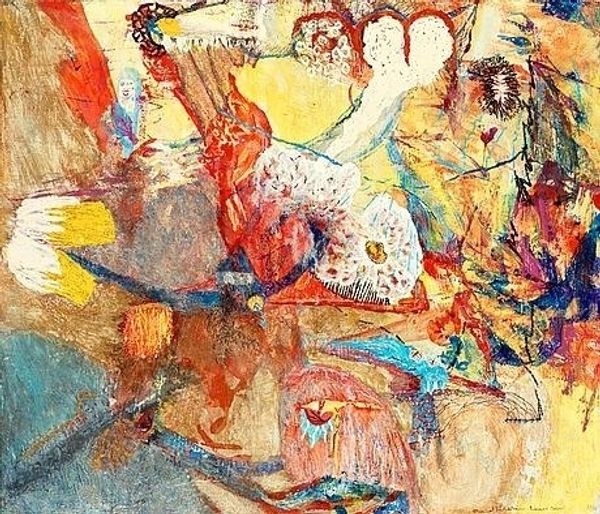
oil-paint
#
portrait
#
oil-paint
#
figuration
#
oil painting
#
group-portraits
#
expressionism
#
genre-painting
#
expressionist
Copyright: Public domain
Editor: Vilmos Aba-Novak's 1925 painting, "Drinkers," rendered in oil paint, certainly has a strong and unsettling energy. The figures seem caught in a moment of disarray. What historical context might shed light on its depiction of revelry? Curator: Well, considering its creation in 1925, amidst the interwar period, the artwork prompts questions about the social role of leisure. Was this kind of scene commonly represented at the time? Editor: I’m not entirely sure, but I get the impression of social commentary through their exaggerated postures, but also their placement as if the artist wanted to showcase regular people Curator: Exactly! Post-war, there was a widespread desire to rebuild community, but the reality for many involved economic hardship and social dislocation. How does the artwork visually communicate these potential tensions? Editor: Perhaps it’s the figures’ detachment despite their proximity? There seems to be a visible darkness amongst the social activities displayed, like a social disconnect, not so social for some of those folks around the table, for example the person laying face down on the table seems completely out of it, unaware of what's happening in front of them, almost as if not really participating. Curator: Precisely! The painting offers not just a depiction of social life but possibly also an assessment of the fractures beneath the surface. To push a little further: would such a direct approach of painting like that had any effect on galleries exhibiting such artwork? Or even the way the public received it? Editor: Interesting. So, beyond a mere snapshot, it’s an engagement with societal undercurrents of its time. Curator: Yes, the art invites us to consider how imagery constructs our perception of collective experience, and the power of institutions on controlling that public view. This piece helps contextualize an era. Editor: Thank you, it gives a new light on how a seemingly social gathering portrayed in the piece may convey way more complexity and social analysis of the period through colors and composition.
Comments
No comments
Be the first to comment and join the conversation on the ultimate creative platform.
